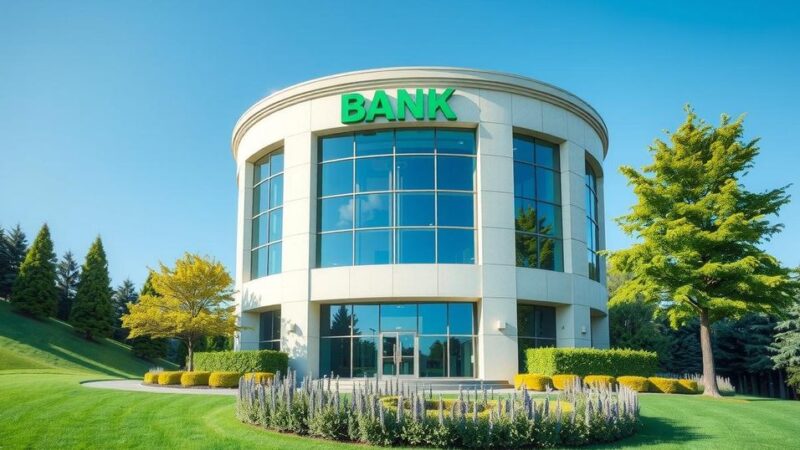The Liberian Government has requested ArcelorMittal Liberia to allow Ivanhoe Atlantic to conduct an Environmental and Social Impact Assessment (ESIA) on the Yekepa-Buchanan railway. This is a critical step in implementing a multiuser rail policy intended to enhance economic benefits and regulatory compliance. The ESIA is a prerequisite for Ivanhoe Atlantic’s operations and marks a significant shift in railway governance in Liberia.
The Government of Liberia has made a significant advancement in its multiuser rail policy by formally requesting ArcelorMittal Liberia (AML) to grant Ivanhoe Atlantic access to conduct an Environmental and Social Impact Assessment (ESIA) along the Yekepa-Buchanan railway corridor. This communication, conveyed through letters from both the Ministry of Mines and Energy and the Ministry of Transport, marks a decisive step toward opening Liberia’s rail infrastructure to multiple users, boosting economic benefits and ensuring regulatory compliance.
The letters, addressed to AML’s CEO Michiel van der Merwe, mandate the company to facilitate Ivanhoe Atlantic’s ESIA scheduled for March 17–21, 2025. The Ministry of Mines and Energy referred to Section 1 of the Mineral Development Agreement (MDA) of 2005, asserting that Ivanhoe Atlantic, as a licensed entity in Liberia, must be allowed to conduct an ESIA as part of its due diligence for anticipated mining operations.
Moreover, the Ministry of Transport reiterated the necessity of the ESIA, designated by the Environmental Protection Agency (EPA) as a prerequisite for Ivanhoe Atlantic’s operations. The letter emphasized that this assessment will not interfere with AML’s existing activities and appointed Mr. Daniel Kpehe Bolay, the Assistant Director of Rail at the Ministry of Transport, to oversee the coordination of this process.
The Yekepa-Buchanan railway, essential for iron ore transportation, has been solely managed by AML for years under its Mineral Development Agreement, which limited access for other mining companies. However, the government, guided by Executive Order 136, is transitioning to a multiuser rail policy that will enhance railway access for multiple firms, ultimately increasing revenue and economic opportunities.
This directive represents a shift from theoretical discussions to operational measures. By allowing Ivanhoe Atlantic access for the ESIA, Liberia is preparing for a future where more than one entity can utilize the railway, which is especially pertinent given Ivanhoe Atlantic’s potential to transport 30 million tonnes of iron ore annually once fully operational.
An ESIA is crucial for assessing the potential environmental, social, and economic effects of large-scale projects. It evaluates impacts on local communities, potential environmental risks, including deforestation and pollution, and the capacity of the rail infrastructure to support increased usage. For communities along the railway, this assessment could enhance economic activities and offer more jobs compared to the limited benefits generated by AML’s singular operations.
The government’s directive presents a challenge for AML, which has historically resisted a multiuser rail model. Nevertheless, the existing MDA does not grant AML the authority to obstruct the environmental study. This ESIA requirement is a regulatory obligation independent of commercial negotiations, leaving AML with little legal basis to deny access.
Despite AML’s legal challenges concerning the multiuser transition, a 2022 opinion from the then-Minister of Justice reinforces the government’s right to regulate rail access. By advancing the ESIA process, the government signals its commitment to implementing national infrastructure policies without awaiting AML’s consent.
This development is timely, as Liberia seeks to attract international investors to exploit its iron ore resources. The absence of rail access has been a significant barrier for potential investors due to AML’s monopoly. With Ivanhoe Atlantic moving forward, this may instill confidence in other investors about Liberia’s commitment to an open and competitive infrastructure environment, potentially unlocking significant investments.
The path ahead for AML is now uncertain as it must decide whether to facilitate the ESIA, demonstrating a willingness to cooperate with the transition to a multiuser rail system, or to resist, risking further tensions with the government. With oversight personnel from the Ministry of Transport already assigned to the ESIA process, resistance would likely draw additional scrutiny.
Simultaneously, Ivanhoe Atlantic will initiate feasibility studies for the Liberty Corridor, which may alleviate dependence on the existing railway infrastructure. Should AML persist in opposing the multiuser model, its influence in Liberia’s long-term rail infrastructure plans could diminish as new companies gain access.
Liberia’s initiative to pursue an ESIA for Ivanhoe Atlantic signals a pivotal step in transforming its economy and reinforces its commitment to a multiuser rail system that benefits multiple stakeholders rather than serving solely AML’s interests. Observers will closely watch AML’s next moves, but it is evident that this system is transitioning from concept to reality, fostering a competitive business landscape in Liberia.
In summary, Liberia is advancing its multiuser rail policy through its directive to ArcelorMittal Liberia, allowing Ivanhoe Atlantic to conduct an ESIA. This move signifies a significant shift towards opening railway access to multiple firms and enhancing economic opportunities. The government exhibits a strong commitment to its infrastructure policies, which may encourage investment in the national economy and improve local community benefits. As the situation progresses, it will be crucial to observe how AML responds to these developments, as they could shape the future of Liberia’s transport infrastructure significantly.
Original Source: www.liberianobserver.com






